Make your own balance scale to compare household items and measure them by mass with this preschool balance scale activity!
This preschool balance scale STEAM activity is so simple to set up! It’s also a great activity to inspire scientific learning.
I love preschool aged kiddos because they are super curious about how things work. This balance scale activity is a great activity to introduce scientific, mathematical, and engineering concepts.
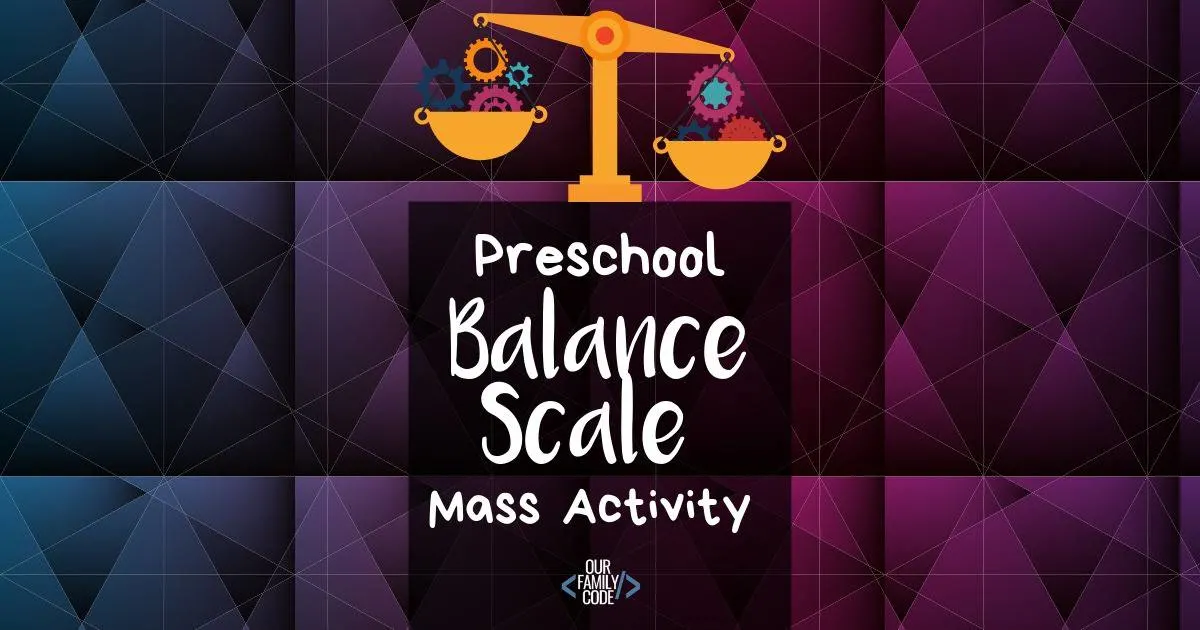
Our goals were to make observations about the physical properties of each object, measure and compare the mass of each object, and measure the mass of each object with a non-standard unit.
To encourage the practice of observing and recording results, I came up with a simple Balance Scale workbook that an adult can help with.
This post contains affiliate links. As an Amazon Associate, Our Family Code earns from qualifying purchases. Please see our Disclosure Policy for more details.
Why STEAM Activities?
STEAM is the abbreviation for Science, Technology, Engineering, Art, and Math.
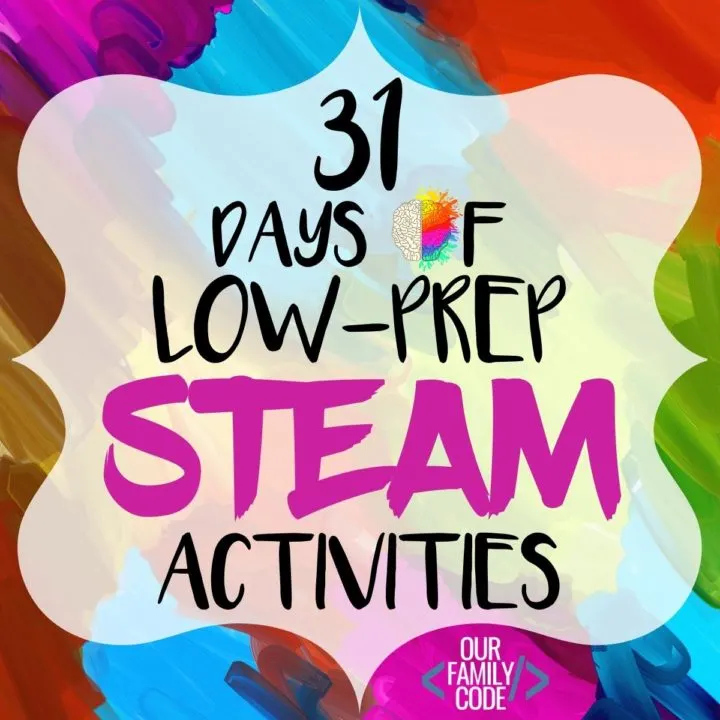
STEAM, like STEM, is an integrated approach to learning that encourages learners to make connections between the concepts they are learning and how they apply them to real-world problems.
STEAM helps students ask questions, problem solve, think creatively, and produce innovative solutions. Many schools have adopted STEAM learning activities into their curriculum, but it’s never too early to start building critical thinking skills.
We love to learn through play at our house and have a blast doing activities for toddlers all the way to tweens!
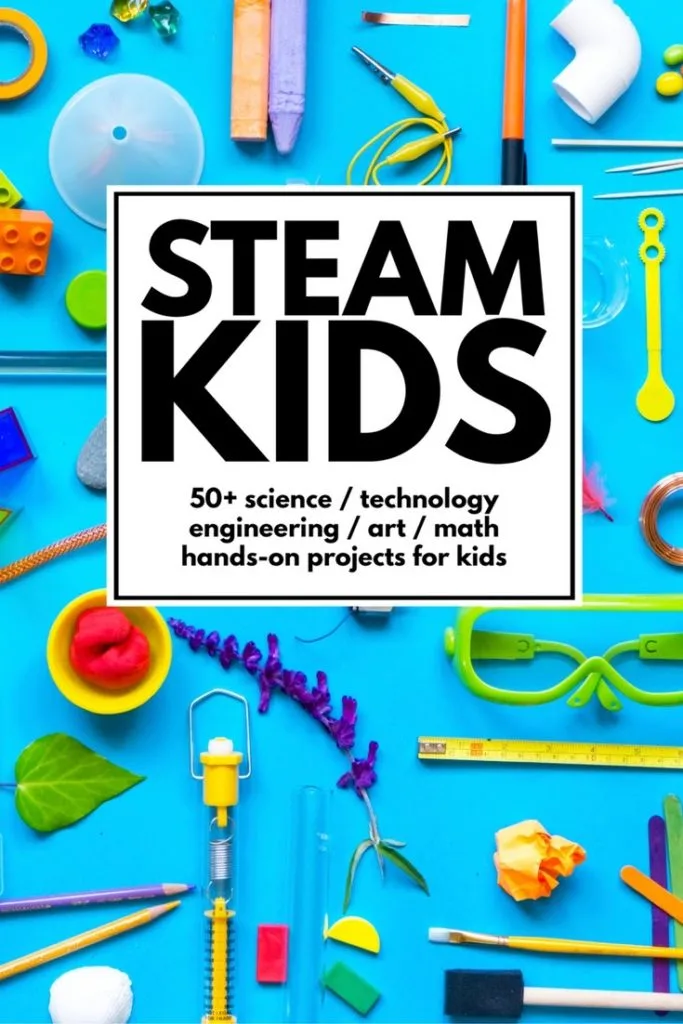
Looking for some more hands-on activities that incorporate Science, Technology, Engineering, Art, and Math (STEAM)? Then you have to check out STEAM Kids!
This book features more than 50 hands-on activities that are organized into easy to implement categories, so you know exactly what concepts your kids are learning!
Grab your copy from Amazon today or get instant access to this great book by purchasing a downloadable PDF!
Key Simple Machines and Mass Activity Terms
Weight is the measure of the pull or force of gravity on an object and mass is the amount of matter in an object and a measure of the force needed to accelerate it.
A lever is a simple machine that is made of a fulcrum and beam with an input force and an output force. A balance scale is a Class 1 type lever designed with the fulcrum in between the load and the effort.
The fulcrum is the point on which a lever moves. Load is the mass the lever is trying to move, while effort is the force that moves the lever.
Think about a seesaw. The fulcrum of a seesaw is the center point on which the board balances. The load would be the amount of mass on one end that is moved by the effort that moves the seesaw.
This activity also explores key terms such as equal, balanced, more than, less than, compare, heavier, and lighter.
You might also like: Free Bingo Marker Letter Recognition Workbook for Preschoolers
Preschool DIY Balance Scale Activity Supplies
- Shoebox lid
- Can of soup
- Marker
- Tape
- 2 plastic cups
- Pencil
- 15 pennies
- 10 nickels
- Small objects (gems, rocks, building bricks, blocks, shells, dice, etc.)
- Optional: Magnets (We use these magnets for all of our crafts and activities.)
- Free Balance Scale Workbook (grab this at the end of the post)
Preschool Balance Scale STEAM Activity
Begin with a handful of different sized objects. Write the objects you are using in your Balance Scale Workbook.
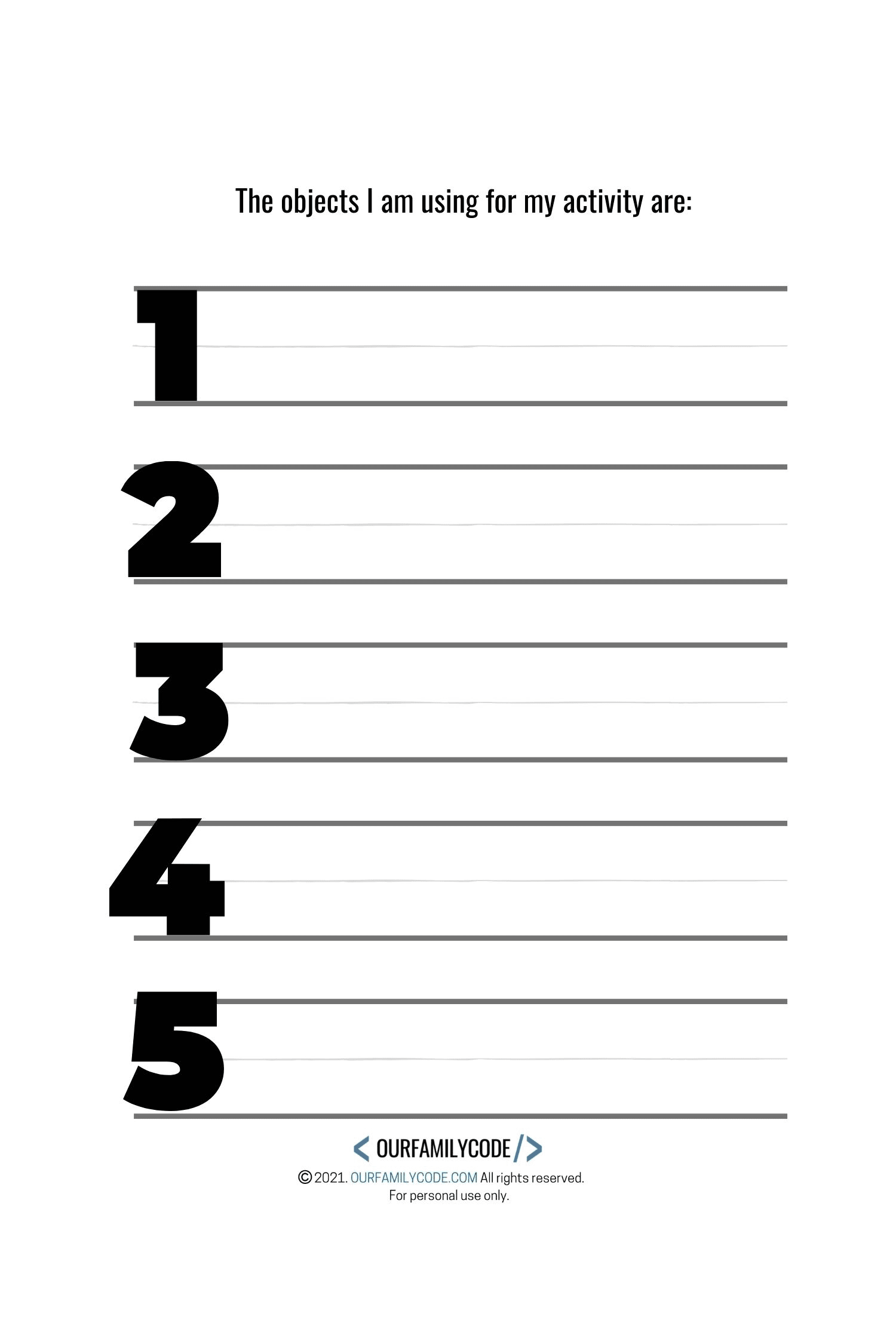
Next, use physical properties to sort your objects from largest to smallest. Record your objects in your workbook.

Build a balance scale with a can of soup (you can also use a pencil), a shoebox lid, tape, and a marker. The can of soup will be your fulcrum.
Tape the can of soup to a surface, so it doesn’t roll. Balance your shoebox lid on top of the soup. Do not use tape to secure the lid to the can.
Place two empty cups on either end of your shoebox lid. Make sure that the cups are all the way to the end on either side. Make sure that the cups are balanced before beginning.
I used magnets on the inside and underneath my shoebox to secure the cups in place. Make sure to balance your lid if you chose to add magnets to your cups.
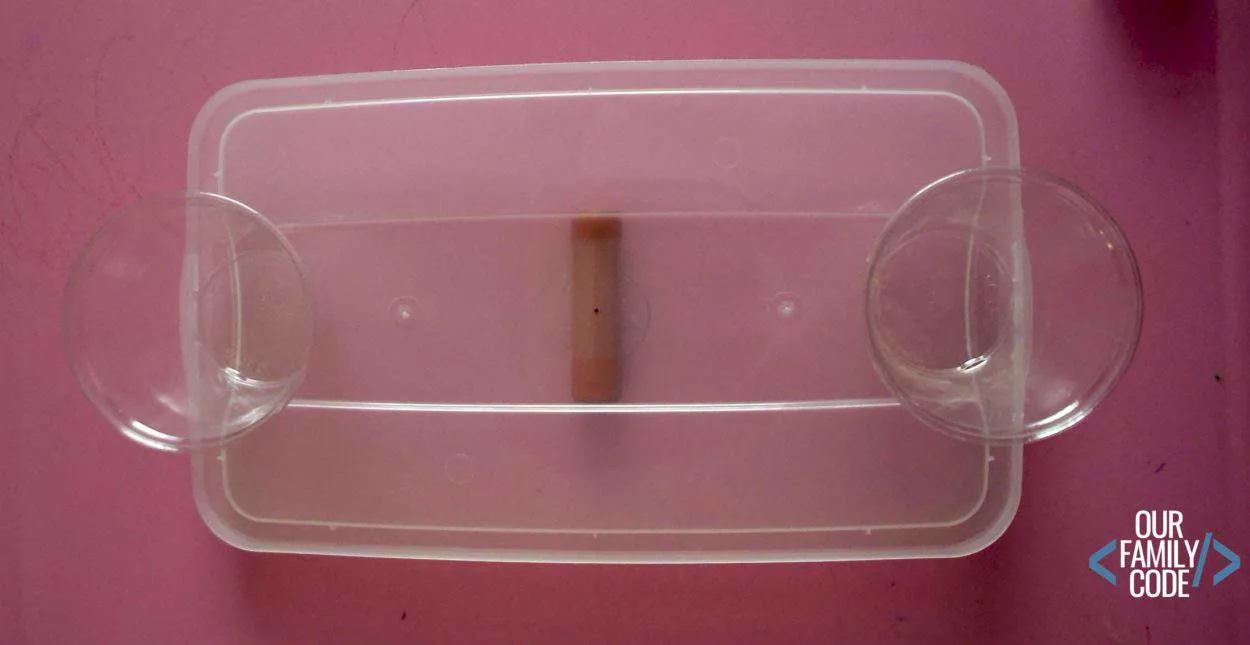
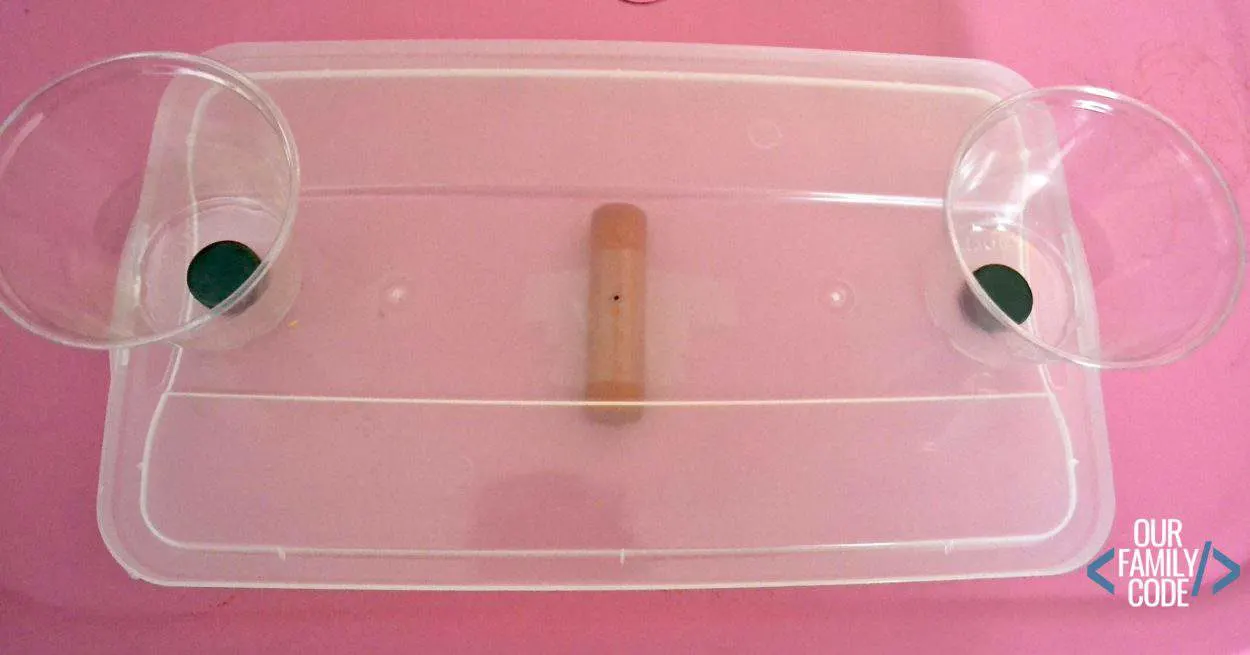
Use your balance scale to measure your different objects and compare them to one another. Record your results in your Balance Scale Workbook.
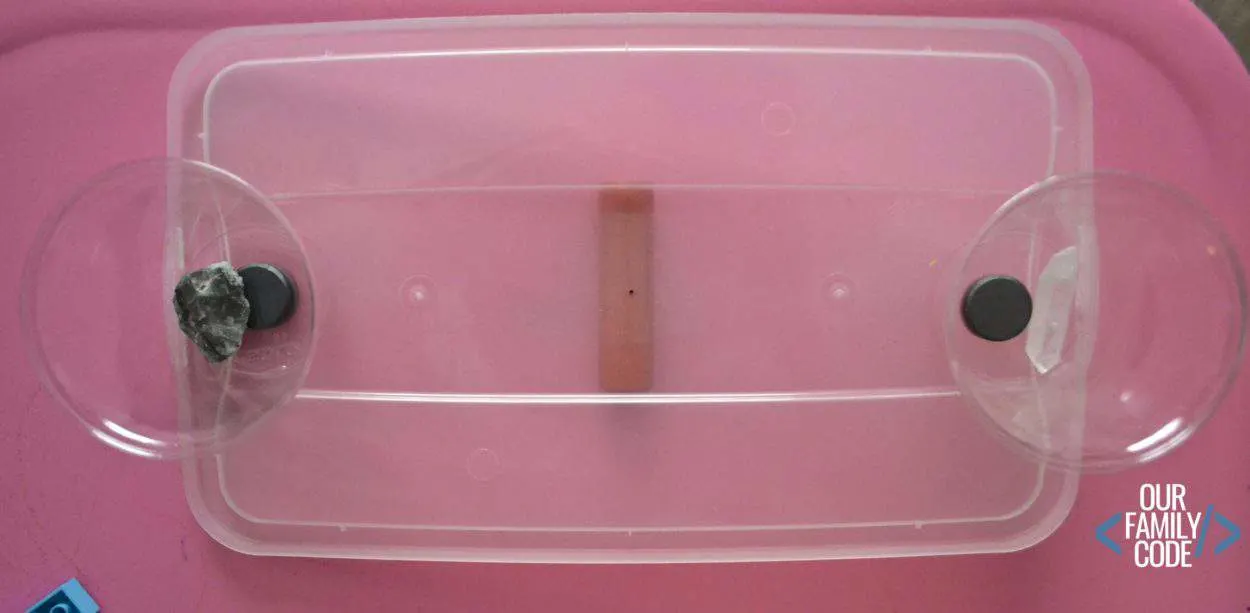
Did the order of your items change from Step 1?
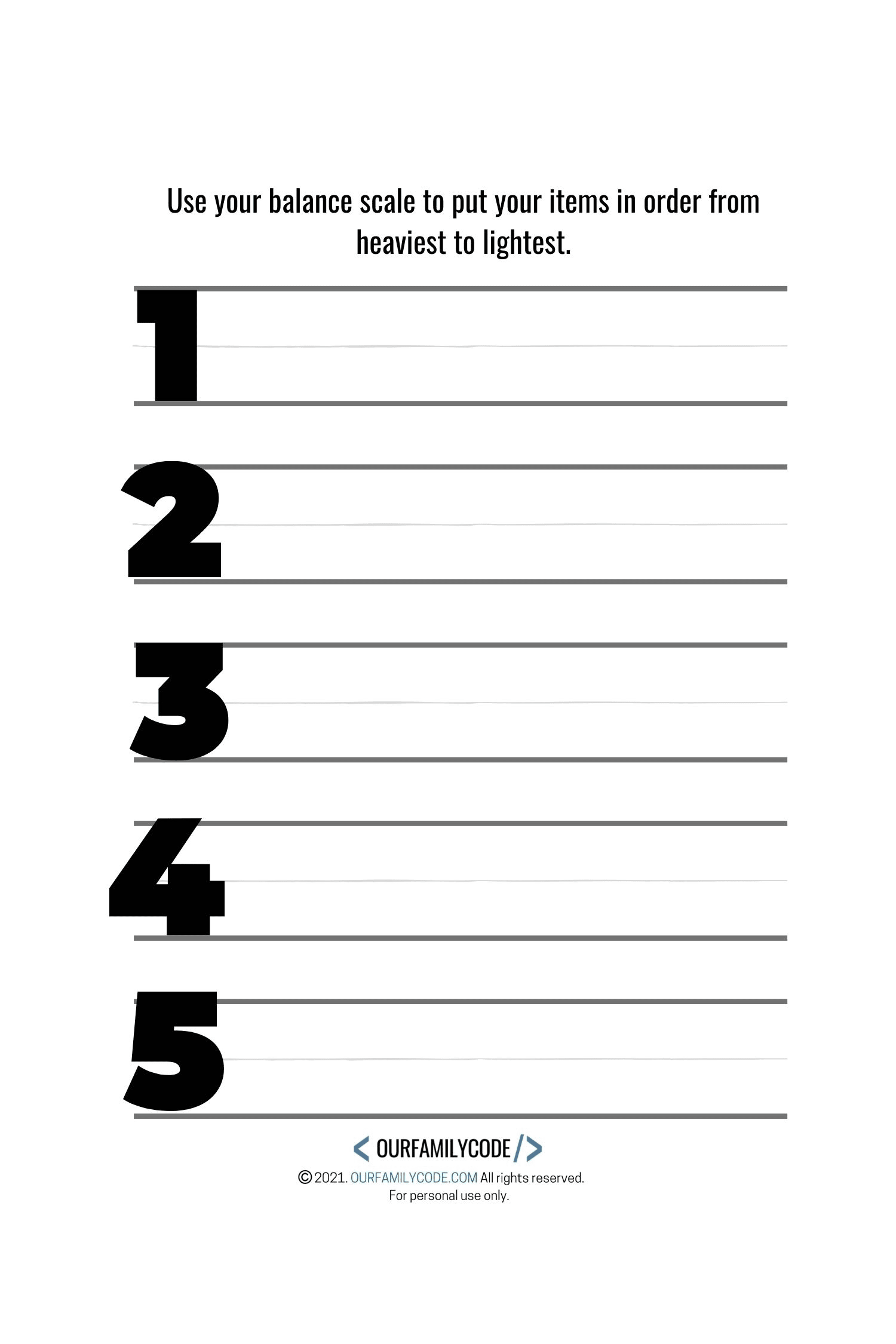
Use pennies to measure the mass of your objects. Make sure to record how many pennies each object weighs in your Balance Scale Workbook.
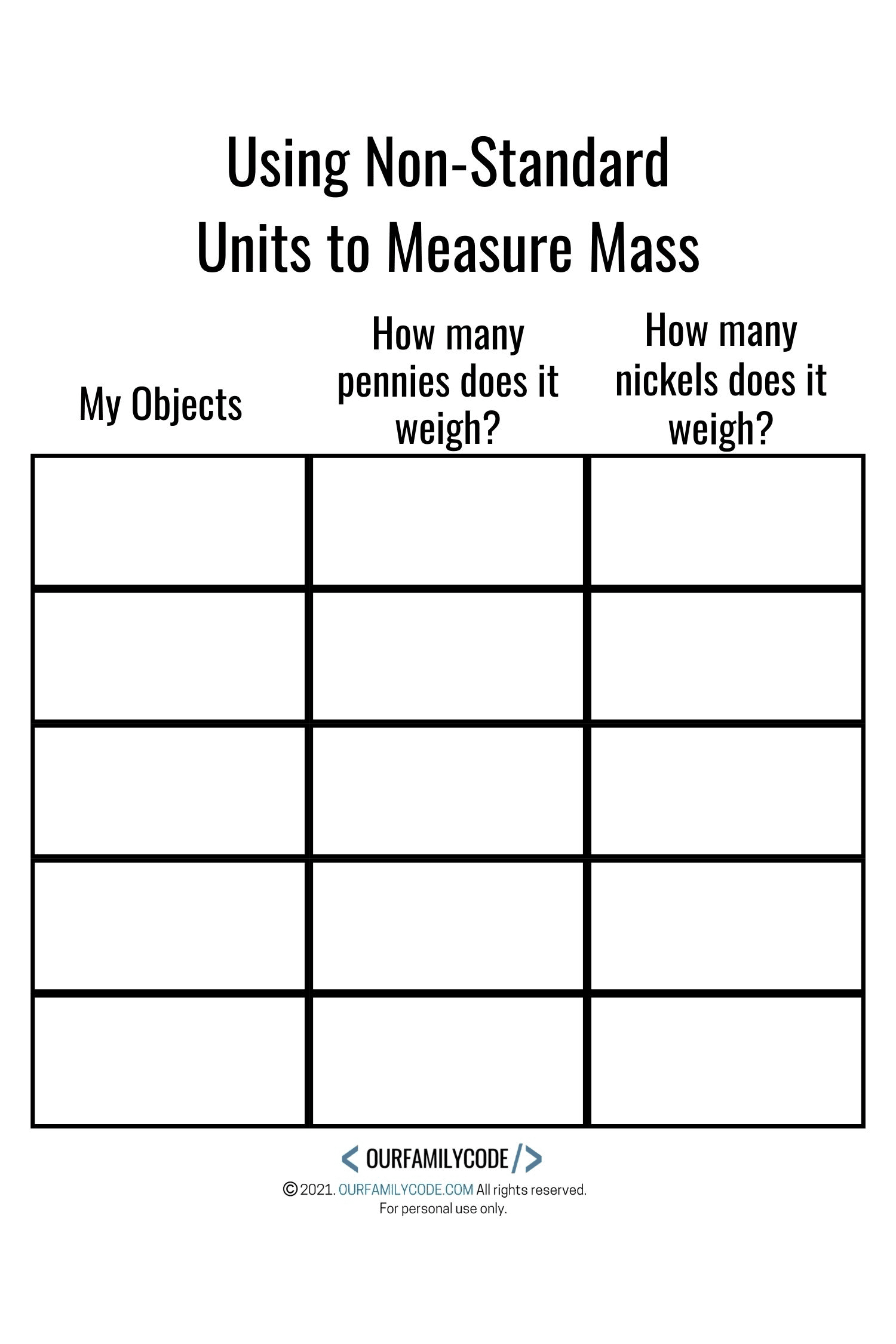
Invite your child to explore independently. Use the balance scale cards in your workbook to help guide them.
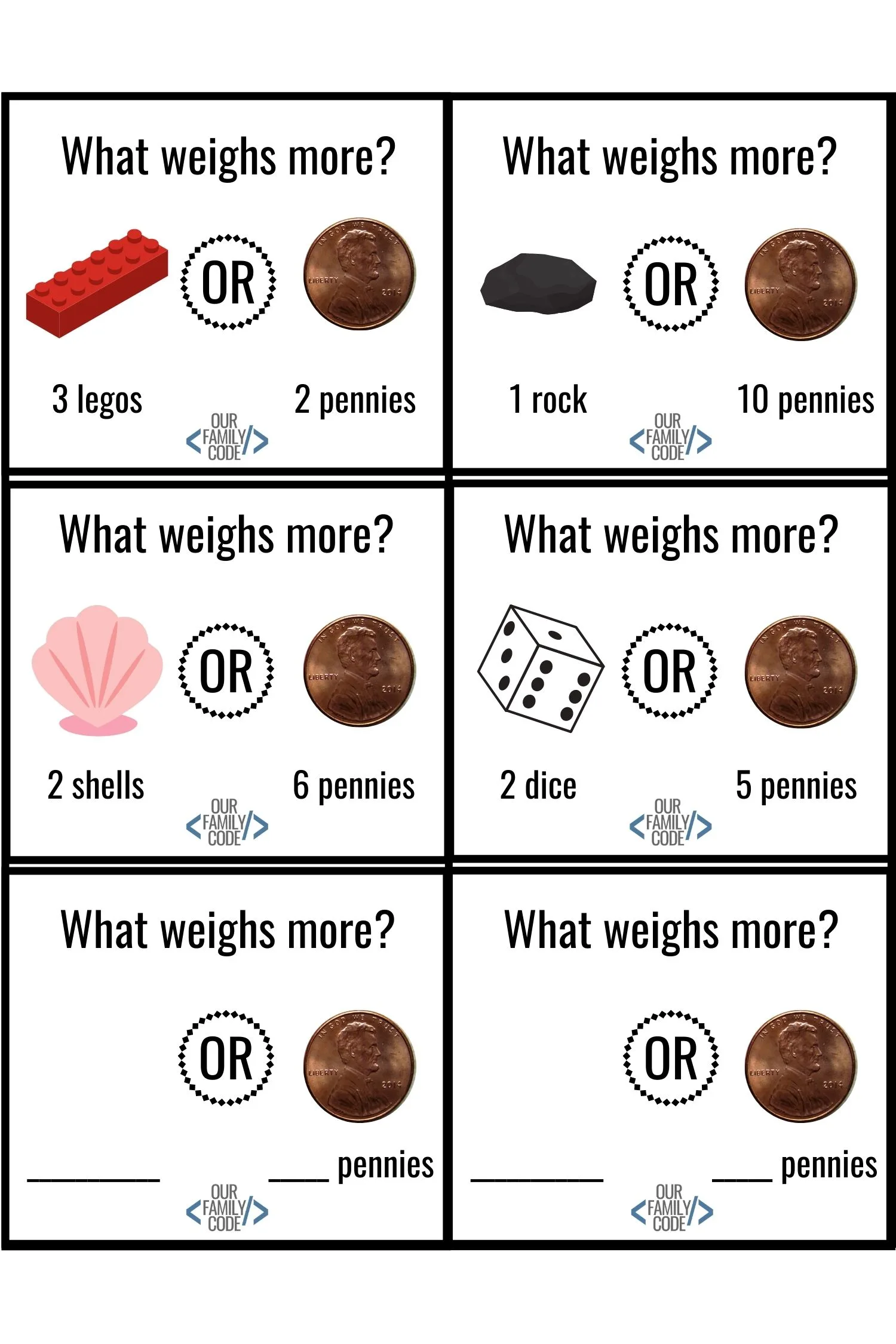
Questions to Discuss During Your Balance Scale Activity
- Does the size of an object always determine its mass?
- Do you have a small object that has more mass than you expected?
- Do you have a large object that has less mass than you thought?
Levers in Our Everyday Life
Some levers in our everyday life include: seesaws, scissors, tweezers, crowbars, bottle openers, and hammers!
<<CLICK HERE TO DOWNLOAD THE FREE PRESCHOOL BALANCE SCALE WORKBOOK>>
Connect this Preschool STEAM Activity with other STEAM Buckets
Check out these STEAM extensions!
Science
Pair this with a density experiment and place each item in a density tower to compare the density of each item. Larger items don’t always have more mass than smaller items.
Technology
Use the K6 Think Central Math Tools balance scale to explore more objects.
Engineering
You built a balance scale, which is a lever. This is a way to introduce simple machines to preschoolers. Discuss other types of levers. Move your fulcrum to one side of your lid and show how you can lift heavier items by using this type of lever.
Art
Use the Balance Scale worksheet provided to write the names of your objects. Draw a picture on the back to show the size of each item in Step 1.
Math
Graph your results. Use one color for pennies and another color for nickels. Discuss what you see.
Some Books to Read with Your Preschool Balance Scale Activity
We love incorporating books into our activities. Here are some great books about mass and simple machines to read with your activity!
- Iggy Peck, Architect by Andrea Beaty
- Scoop, Seesaw, and Raise: A Book About Levers by Michael Dahl
- Simple Machines: Wheels, Levers, and Pulleys by David A. Adler
- How Do You Lift a Lion? by Robert E. Wells
Looking for more preschool STEAM activities? Check these out!
- K6 Think Central Math Tools (including an online balance scale)
- Explore the 5 Senses with this Preschool Pumpkin Science Activity
- Exploring Velocity with Straw Art
31 Days of Low-Prep STEAM Activities for Kids
This activity is part of our 31 Days of Low-Prep STEAM Activities for Kids. Every activity focuses on each of the buckets of STEAM (Science, Technology, Engineering, Art, & Math) although these integrated projects fit in more than one bucket.
You and your kiddos are going to love all of the activities that we have in store! Visit the 31 Days of Low-Prep STEAM Activity hub and pin it, so you can come back and visit it daily!
PIN THIS IMAGE TO SHARE THIS LOW-PREP STEAM ACTIVITY
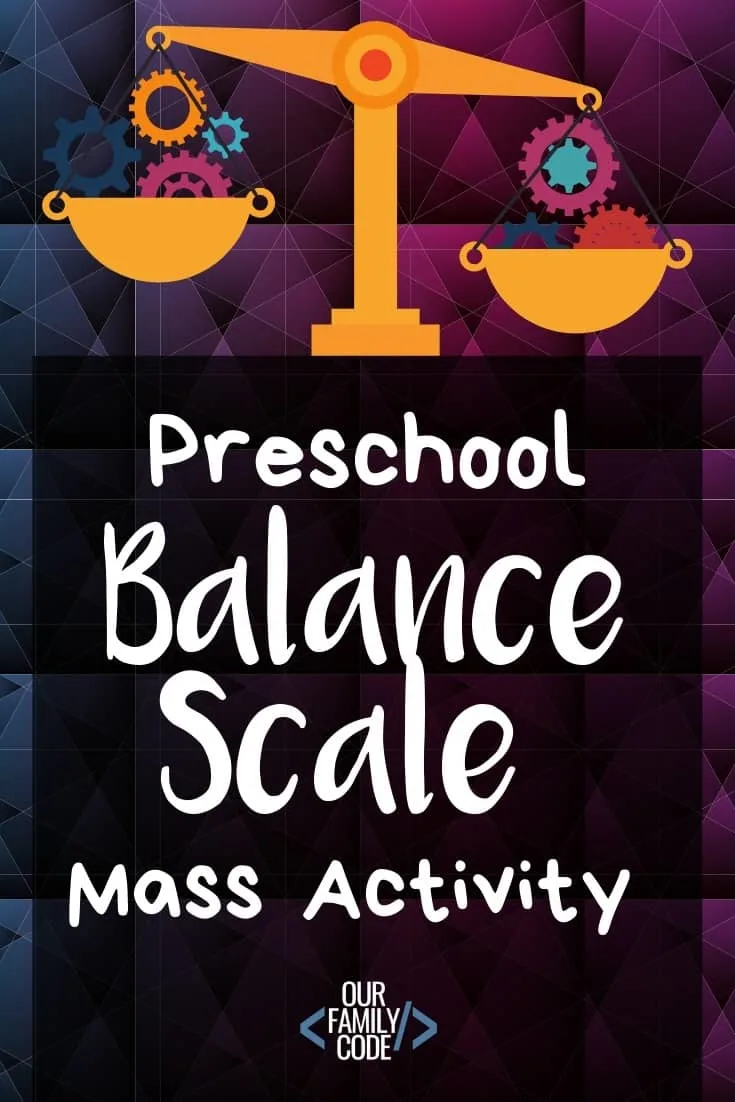
Hands-on Toddler & Preschool Activities
Find more hands-on learning activities for toddlers and preschoolers!
Fitness Coding Card Game: Unplugged Coding Activity
This Fitness coding game teaches kids coding concepts, including conditionals and variables.
Squeegee Art Butterfly Process Art Activity
This butterfly squeegee painting art activity is exactly the type of Spring process art activity that you are looking for!
Blow Painting with Straws: Velocity STEAM Activity
Make straw art pictures to explore how velocity works by blowing paint with straws in this STEAM activity for kids!
Bitmap Coding Unplugged Coding Activity for Kids
This hands-on bitmap coding activity explores algorithms and features a free bitmap art unplugged coding workbook for kids!
In My Heart Storybook Toddler Heart Process Art Activity
Love is in the air and my little lovey toddler can’t get enough of her heart crafts! This toddler heart process art activity is a great way to incorporate a fantastic book about feelings with art
Toddler Snow Cloud Dough Invitation to Learn
Grab this toddler snow cloud dough recipe and pair it with some fun snowman pieces for a sensory play toddler activity
Create a Colorful Turkey Toddler Thanksgiving Craft
This colorful toddler turkey art activity is a great sensory, fine motor skills, and color recognition activity all in one.
How to Catch a Turkey Storybook Toddler Art Activity
This storybook toddler turkey art activity is a great way to incorporate a fun book with art, work on fine motor skills, and learn about colors.
Preschool Shamrock Process Art Sensory Activity
Make preschool shamrock process art with green peppers for a great sensory learning experience!
Dancing Cranberries Fall Preschool Science Experiment
Experiment with dancing cranberries with this super simple preschool science activity while observing concepts like floating and sinking.
Ice Lantern States of Water Preschool Winter STEAM Activity
This ice lantern winter STEAM activity is a great way to teach young scientists about different states of water.
Explore the 5 Senses with this Preschool Pumpkin Science Activity
This pumpkin 5 senses preschool science activity introduces scientific inquiry to young learners and helps get everyone excited about Fall!
Meet Toni, the Maker Mom behind Our Family Code
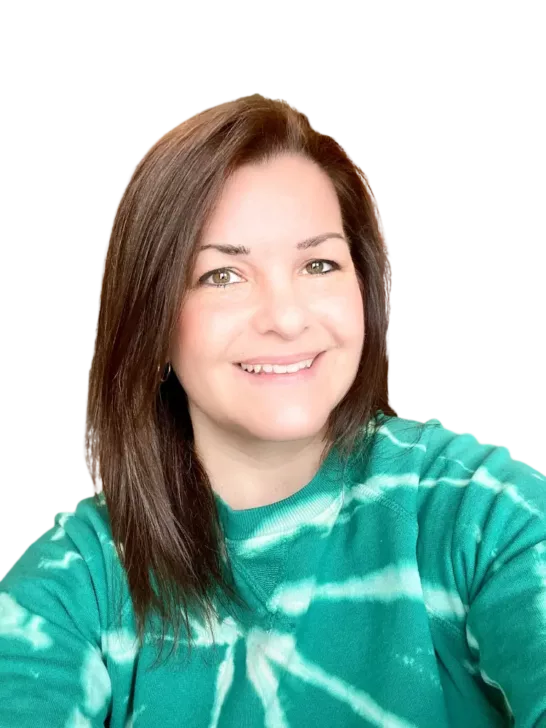
Hey there, I’m Toni! I’m a software engineer and Maker Mom that finds my joy in unleashing my children’s curiosity by exploring STEAM concepts with my fantastic five!
When I’m not chasing toddlers or raising tweens, you can find me tearing things up and putting them back together over here at Our Family Code.
I am the owner and content creator of multiple educational websites designed to increase access to STEAM & STEM education with a focus on teaching computer science and coding to kids of all ages!
You can also find out more about me by visiting ToniGardner.com!
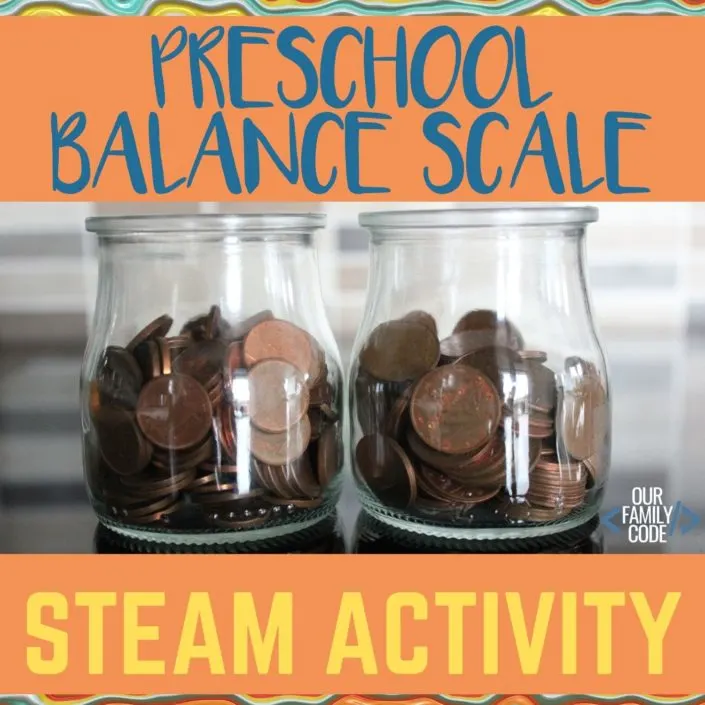
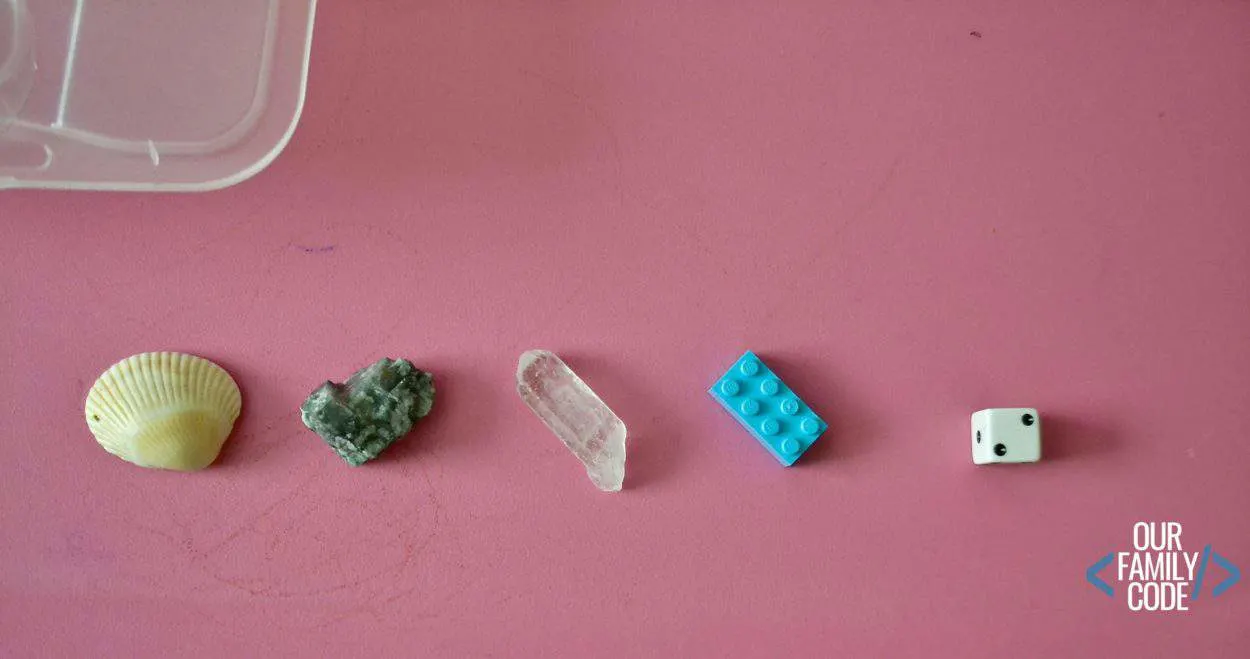
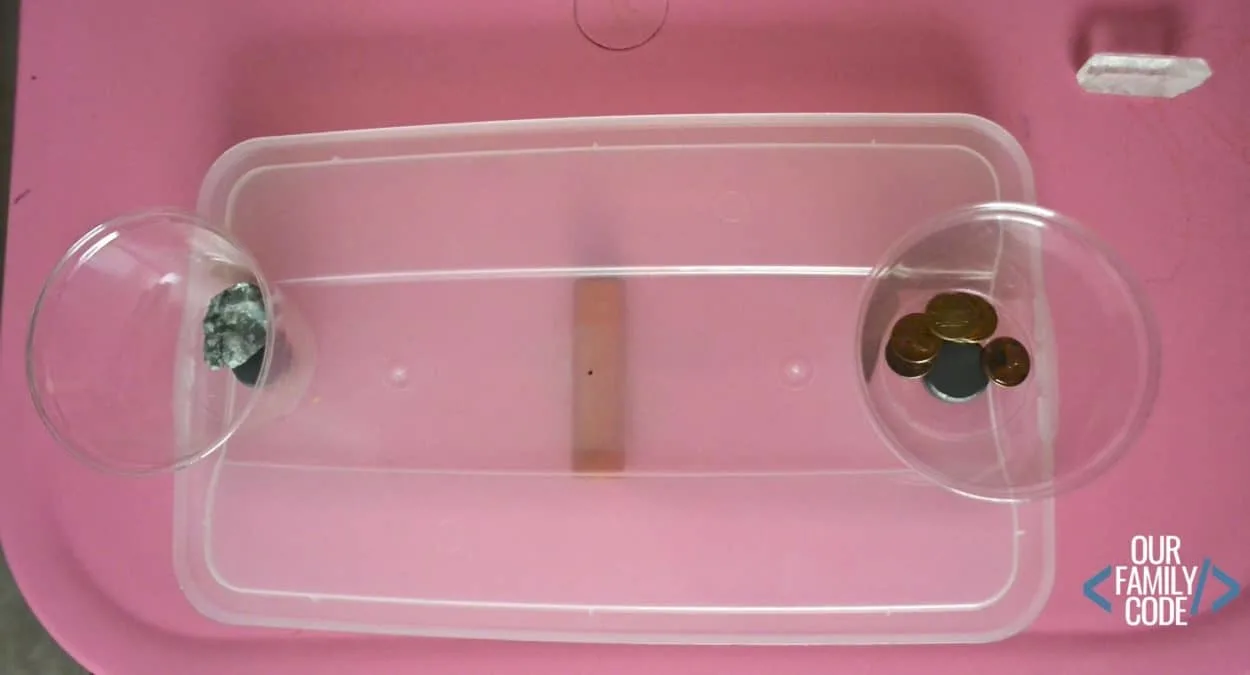
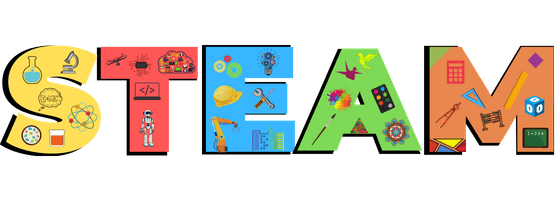

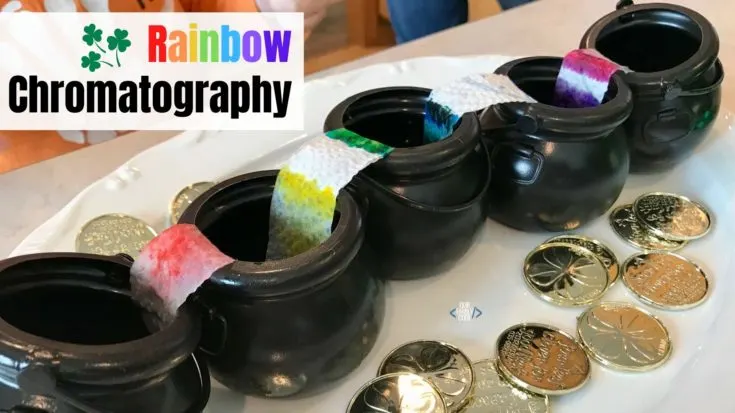
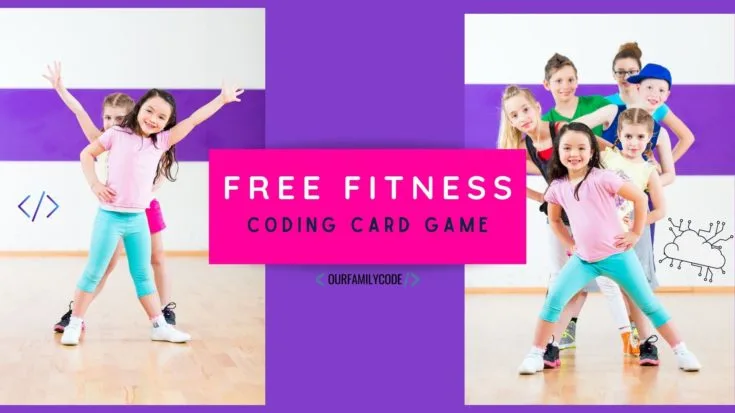
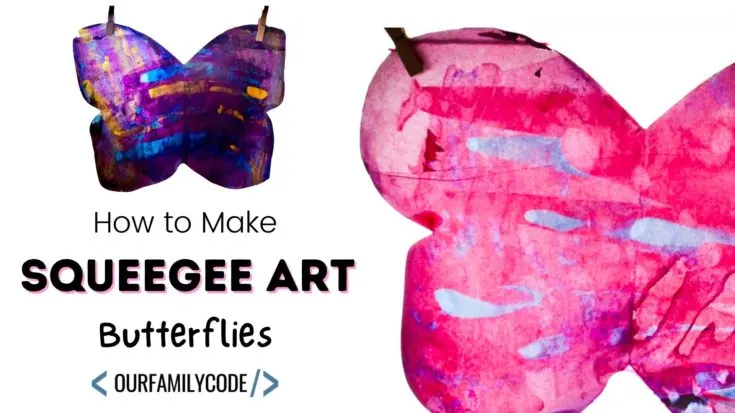
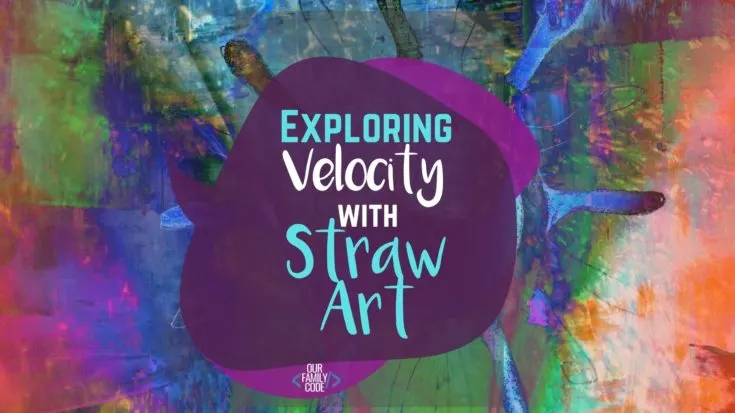
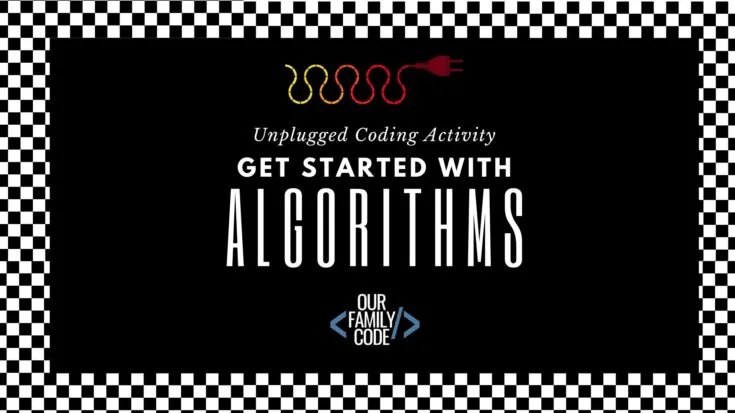
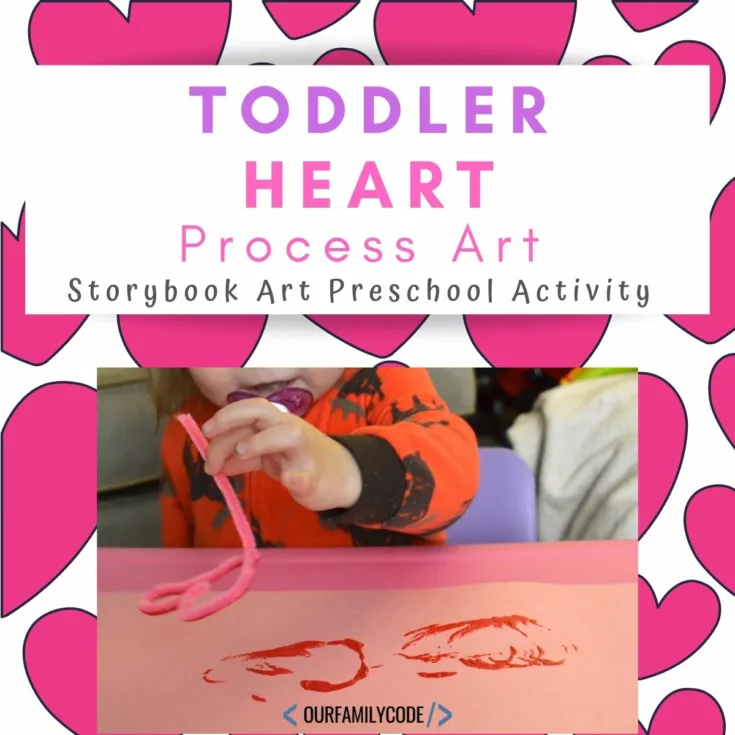
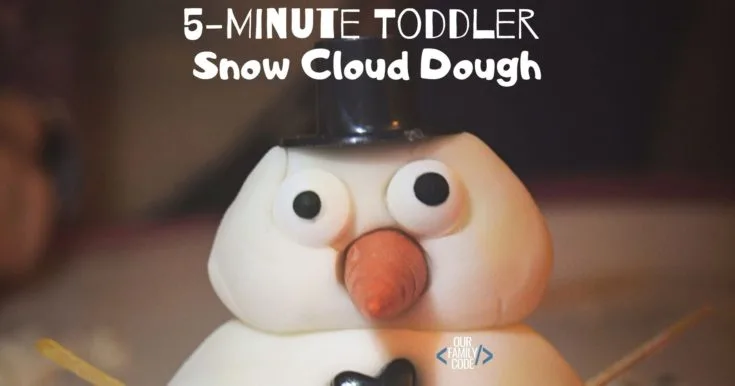
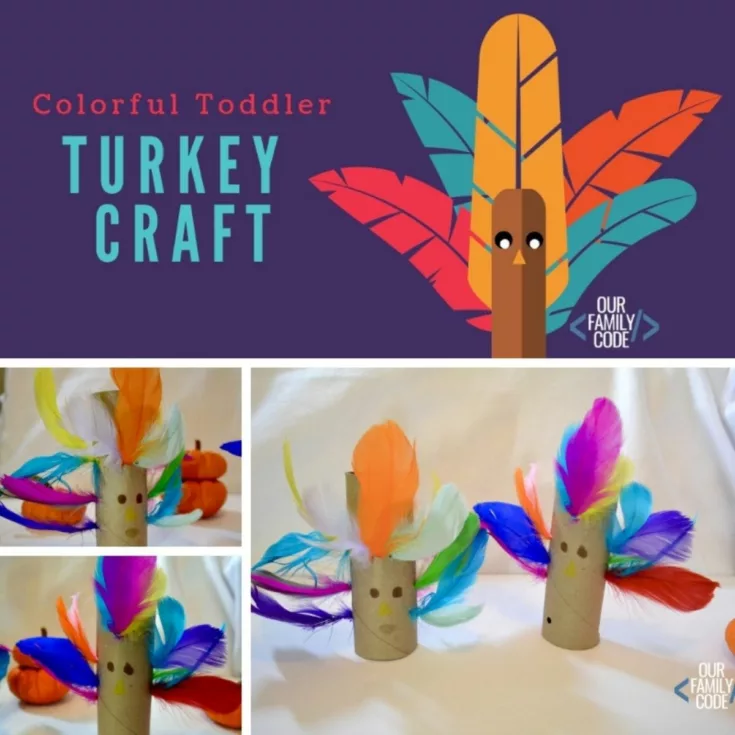
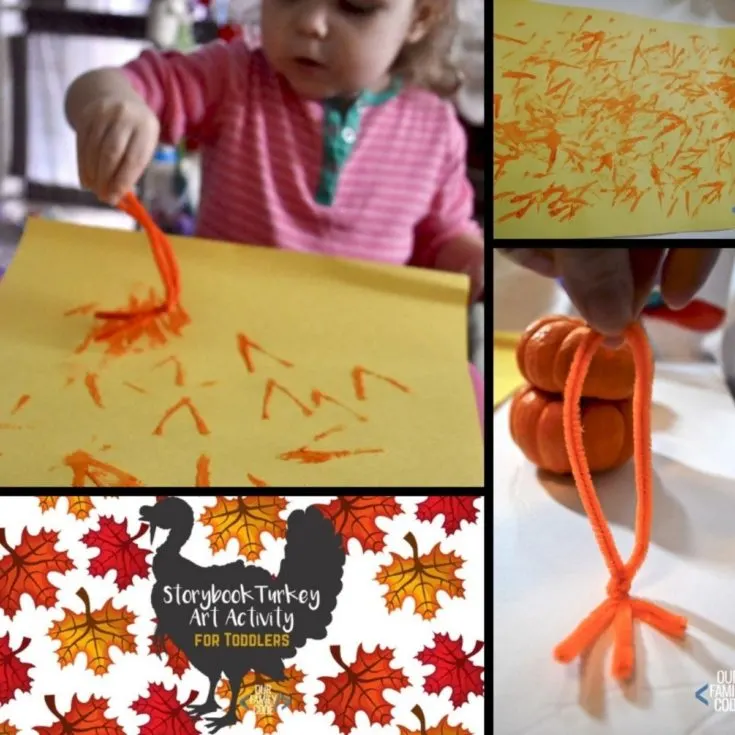
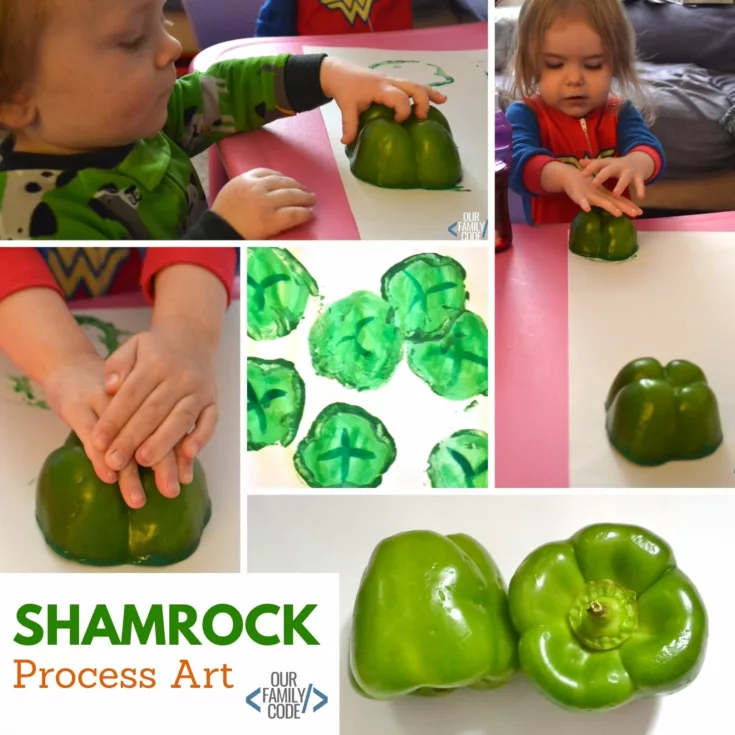
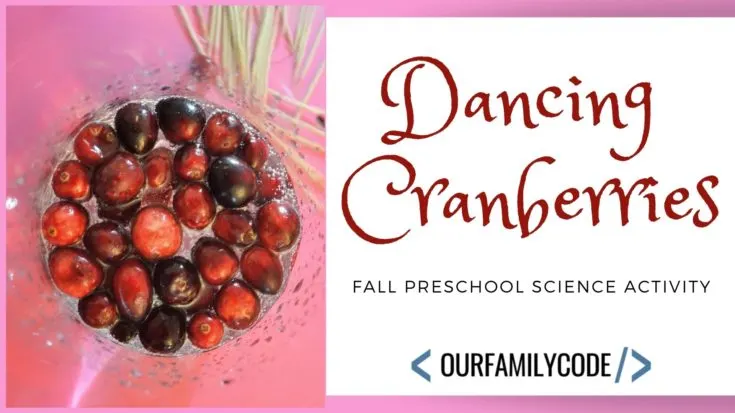
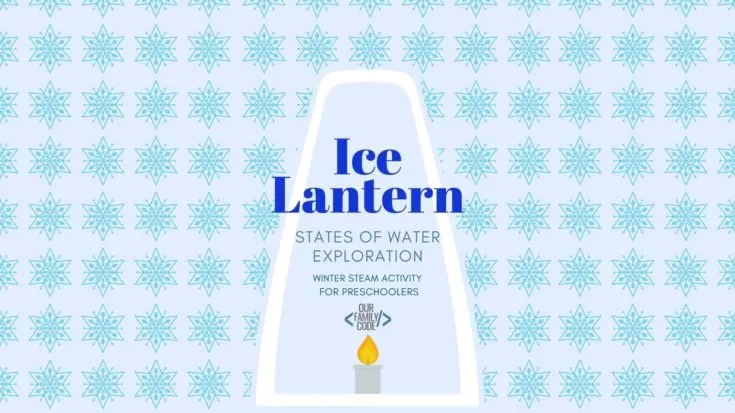
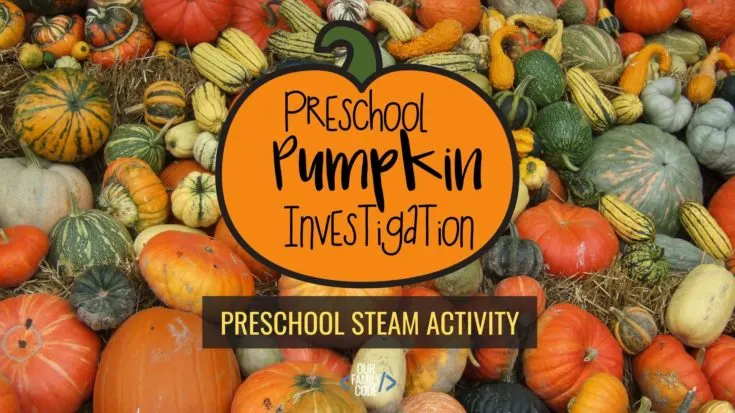
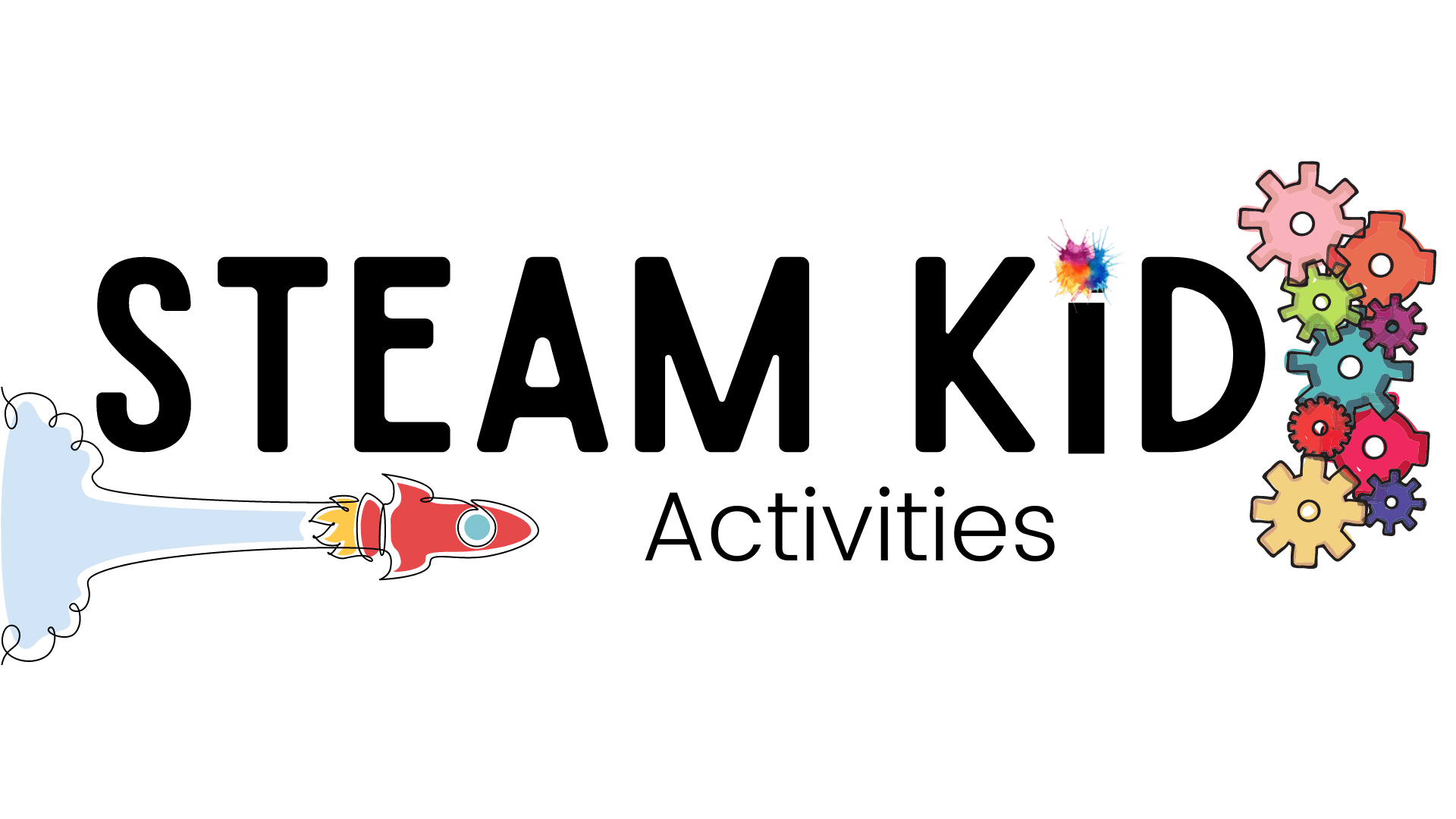

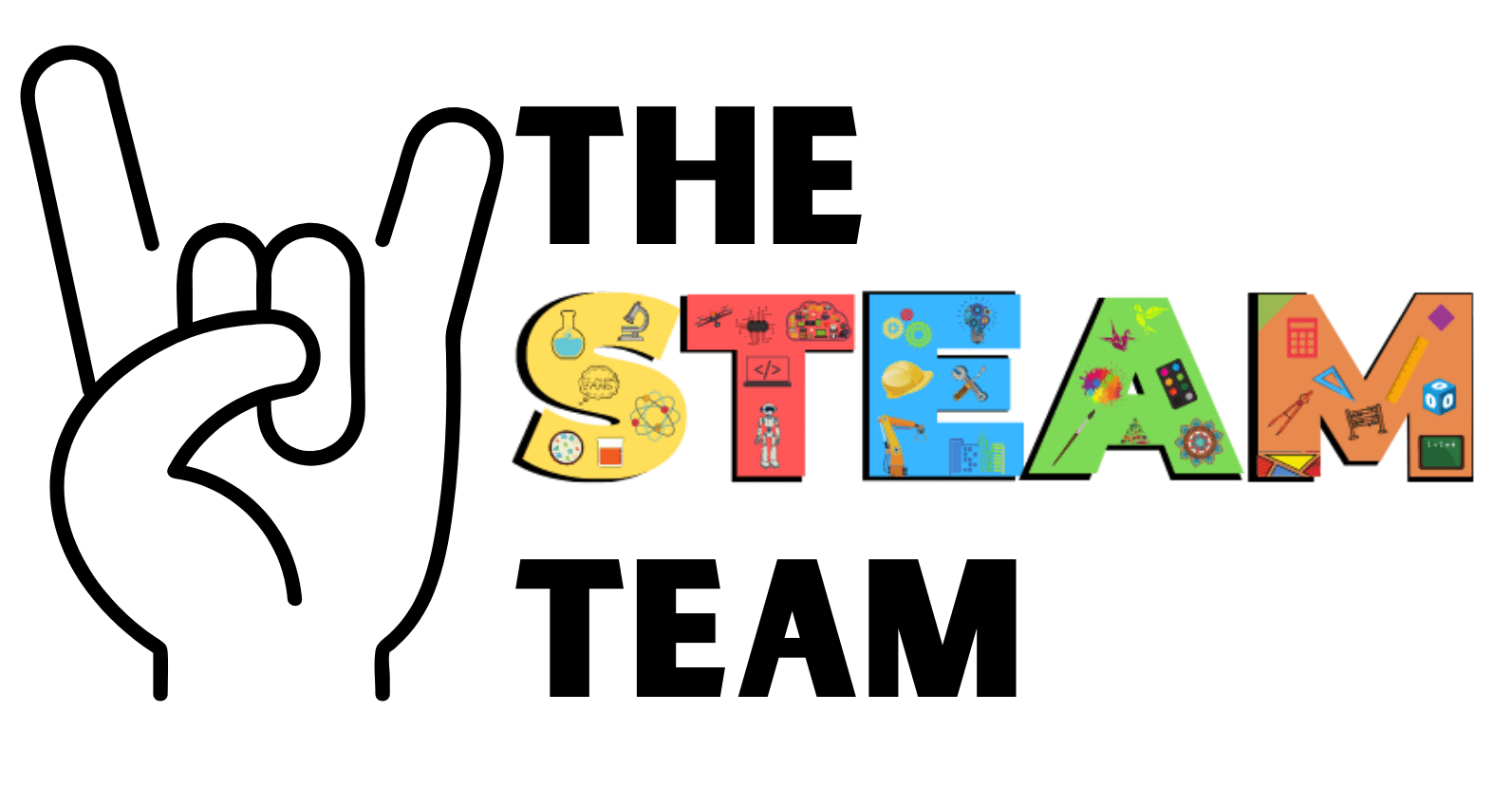
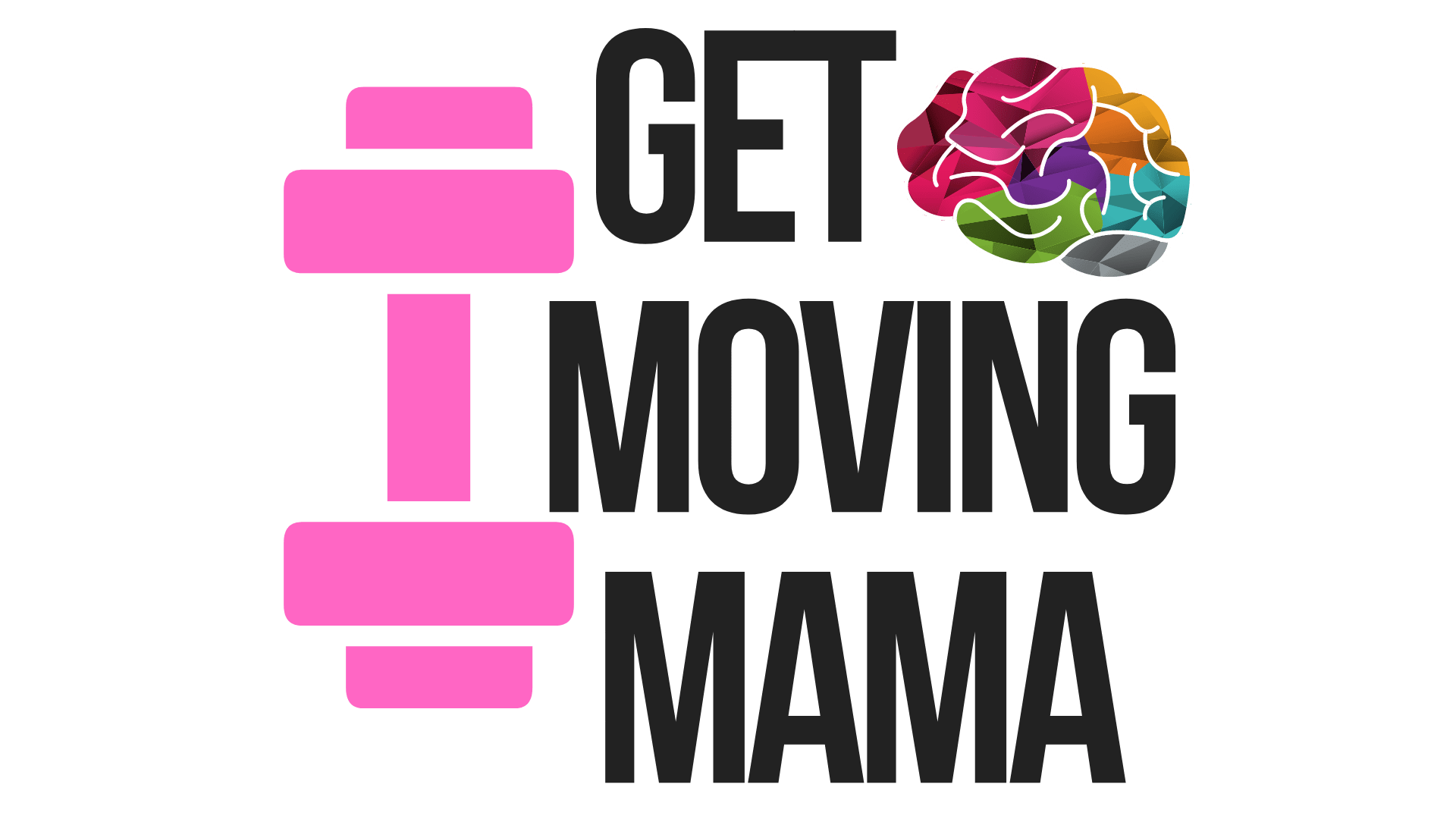
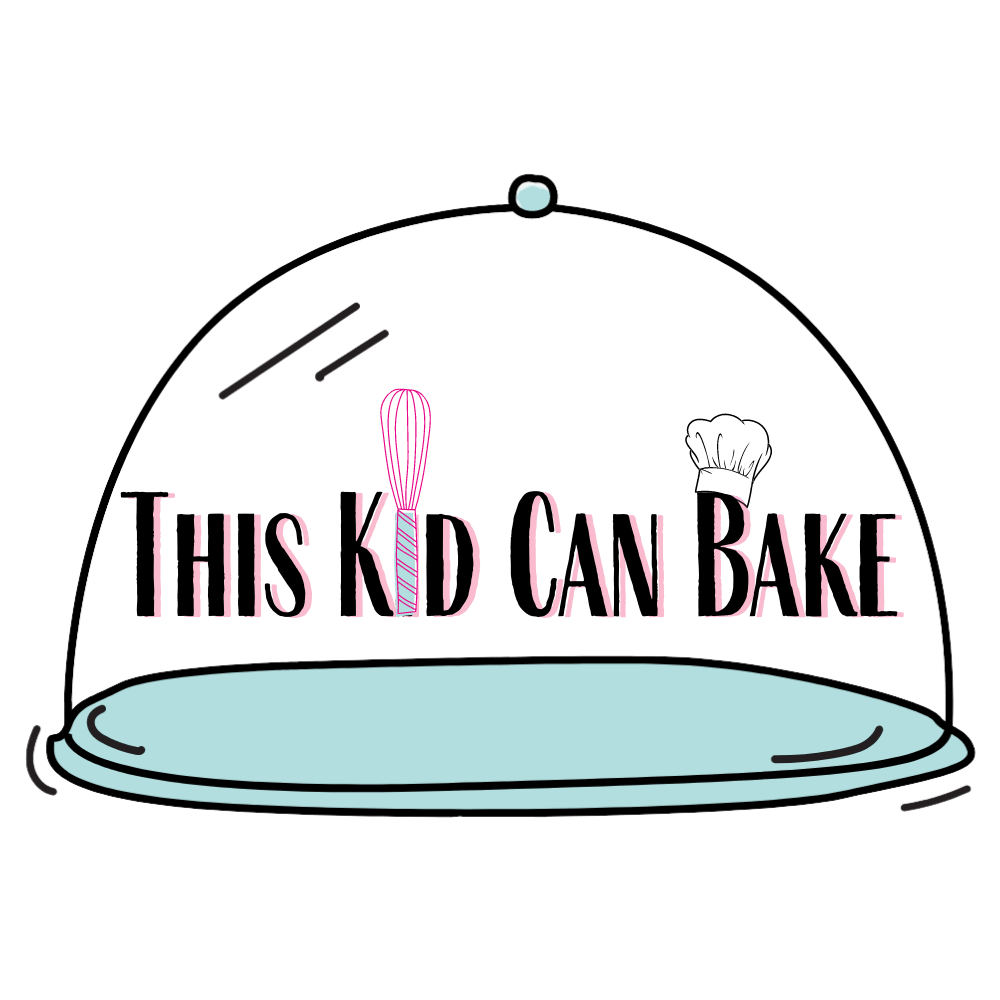
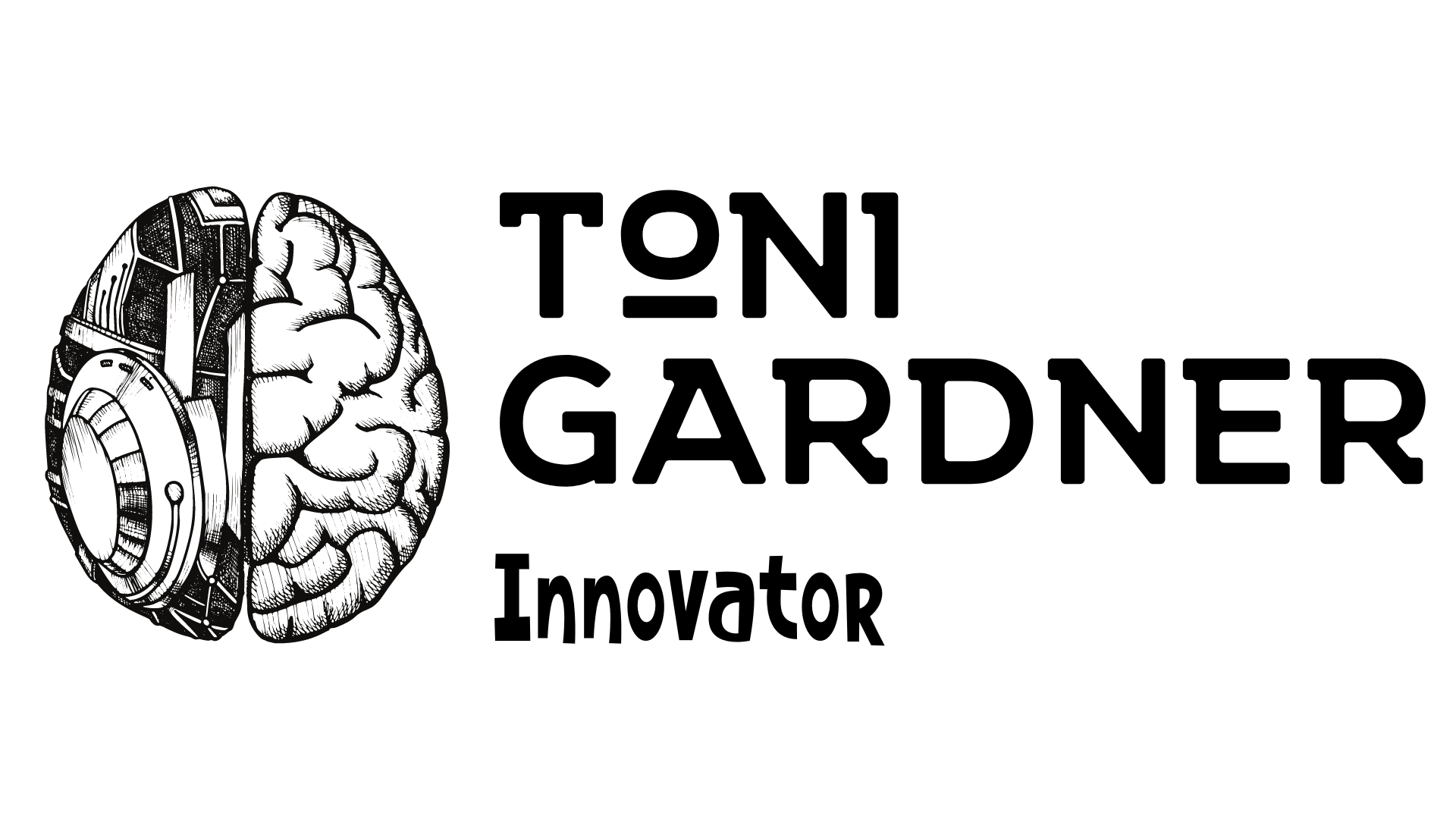
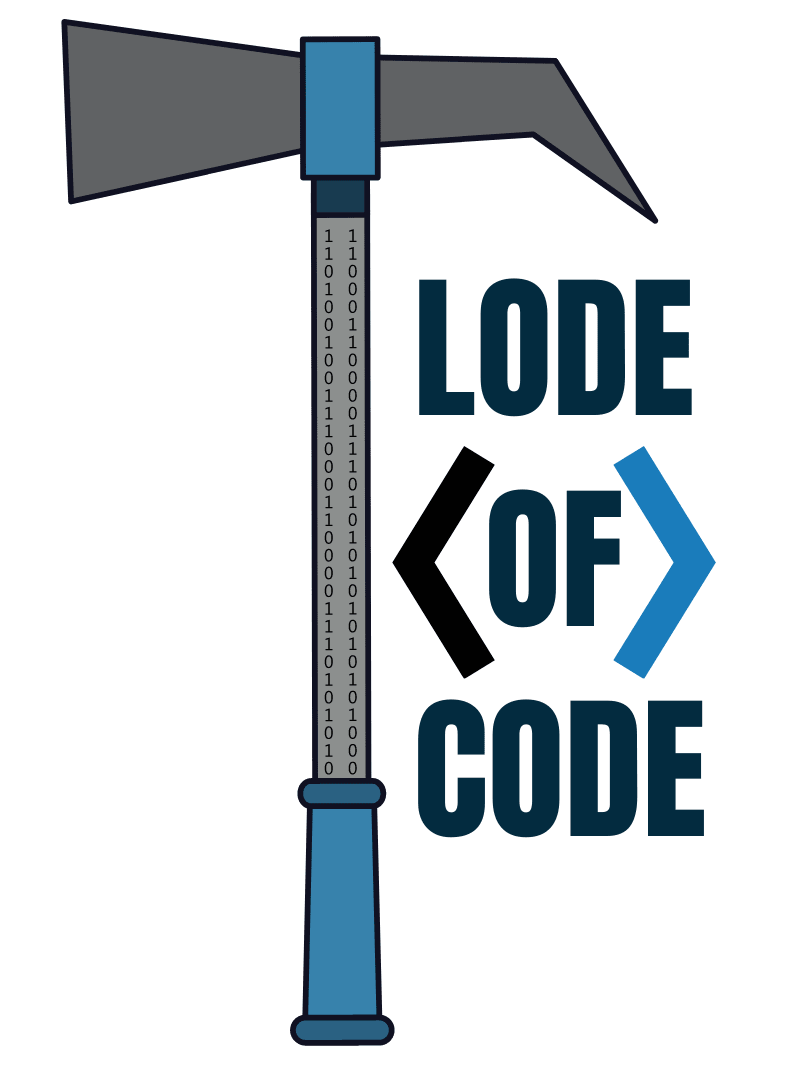
Mary Leigh @ Live Well Play Together
Sunday 7th of October 2018
What a fun idea! My son would love testing out different objects! We can't wait to give this a try!